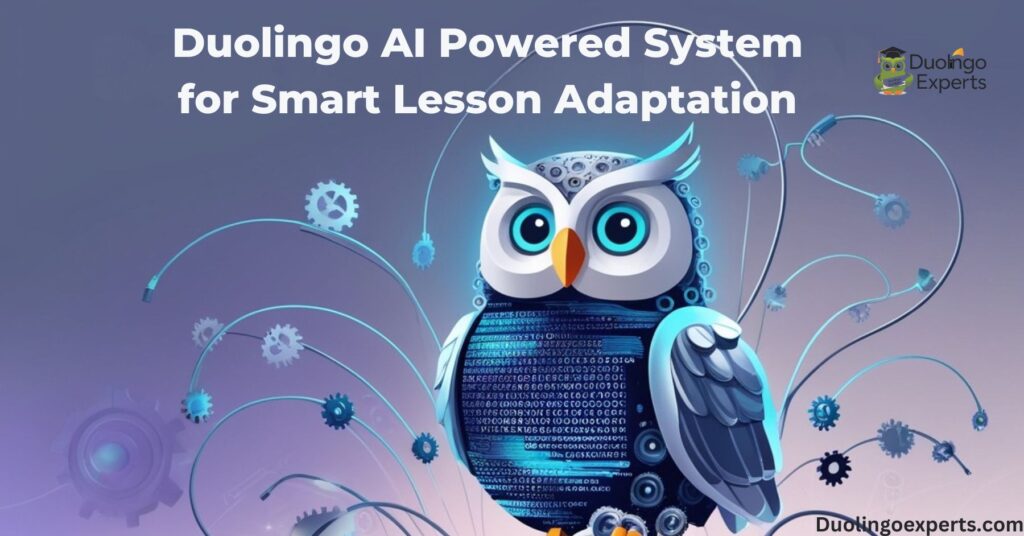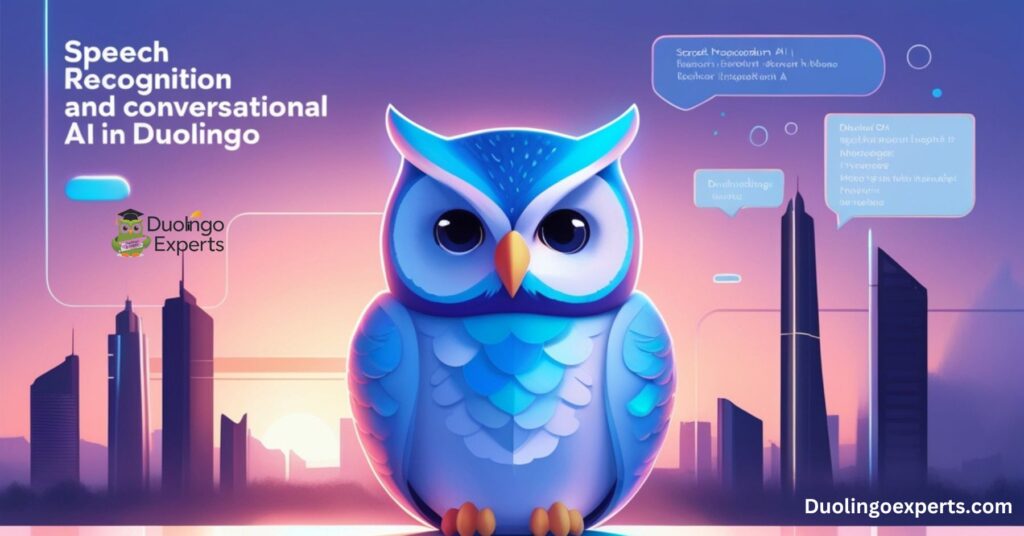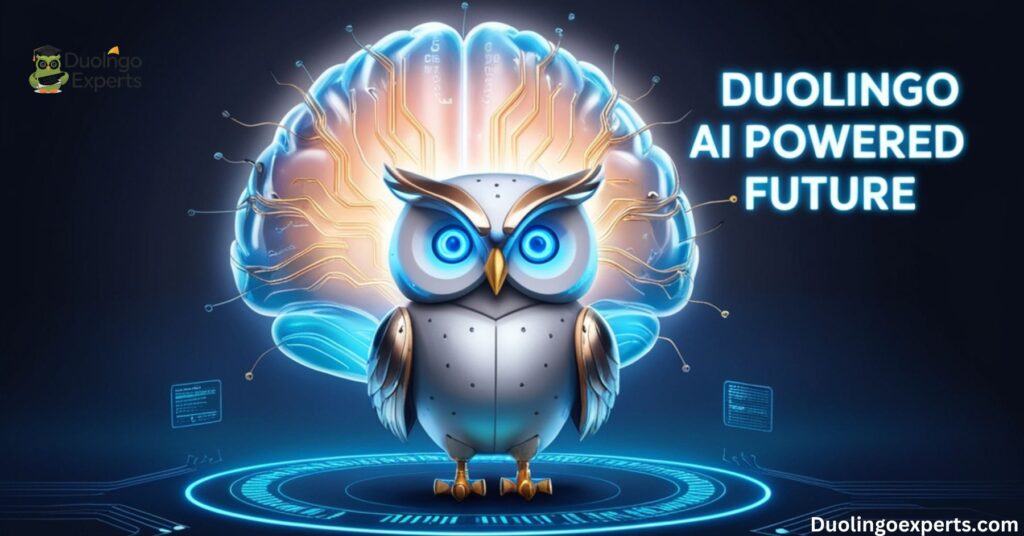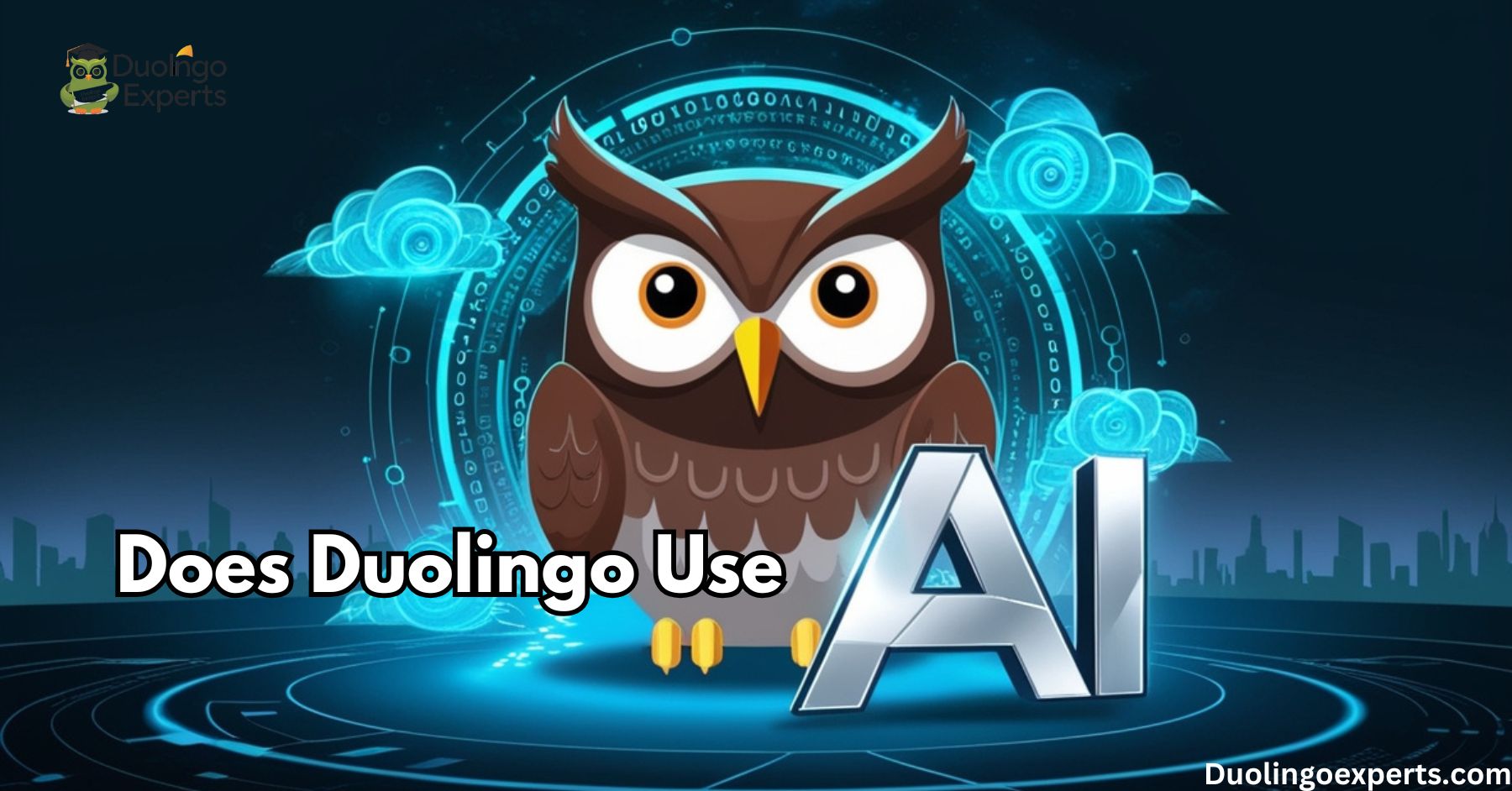In today’s world of language learning, technology has dramatically changed how we approach acquiring new languages. One standout leader in this revolution is Duolingo, which combines its engaging format with cutting-edge AI technology to help millions of users learn new languages more effectively. With Duolingo’s integration of AI tools such as natural language processing (NLP), machine learning (ML), and large language models (LLMs), the platform is transforming how personalized and adaptive learning can be in the realm of education.
But how exactly does Duolingo use AI? This blog post will take you on a deep dive into how the app utilizes AI to enhance language learning and make it smarter, more intuitive, and more personalized.
AI Technology Powering Duolingo: A Behind-the-Scenes Look
At its core, Duolingo’s success as a language learning app is rooted in its ability to deliver interactive and engaging language lessons. But what truly differentiates it from other apps is its AI-powered tools. Let’s break down how Duolingo integrates various forms of AI to create a richer and more customized experience for users.
Natural Language Processing (NLP) at the Heart of Duolingo’s AI
One of the key pillars of Duolingo’s AI is natural language processing (NLP). NLP allows the app to understand and process the human language, whether it’s through text or speech. By using NLP, Duolingo can analyze a learner’s input, whether in the form of writing or speaking, and determine not just the language used but also the intent behind it.
The power of NLP enables Duolingo to offer personalized feedback and adaptive learning paths. Here’s how:
- Understanding Context: NLP helps Duolingo analyze and interpret the context of a learner’s sentence, which is crucial for accurate translation and grammar feedback. Rather than relying on simple translations, Duolingo’s AI can understand the nuances and context of language use, helping learners master more complex sentence structures.
- Speech Recognition: With speech recognition, Duolingo uses NLP to assess a learner’s pronunciation. It can listen to the way a user speaks and give real-time feedback on how to improve their pronunciation. This is essential for building real-world conversation skills in new languages.
Large Language Models (LLMs) – The Engine Behind Language Understanding
Duolingo’s Large Language Models (LLMs) form another cornerstone of its AI-based approach to language learning. LLMs, like the ones used in GPT-4 technology, allow Duolingo to generate contextually accurate responses to user inputs. When you ask Duolingo a question or provide an answer, its LLMs help the system predict the most appropriate output.
How LLMs Make Language Learning Smarter:
- Predictive Text and Grammar Correction: By using LLMs, Duolingo can generate a large variety of responses and anticipate what kind of language structure or vocabulary the user is likely to need next. This is why, even in the early stages of language learning, Duolingo offers learners more advanced sentence structures, preparing them for real-life conversations.
- Real-time Feedback: As you complete exercises in Duolingo, LLMs help the system detect whether you are making mistakes, offering suggestions for improvement. These models can even explain why a sentence is incorrect, reinforcing learning principles and helping you understand grammar rules more deeply.
- Contextualizing Responses: By using LLMs, Duolingo ensures that its responses are not only grammatically correct but contextually relevant. For example, the app can distinguish between various meanings of a word depending on the sentence it’s used in. This ability is key for more advanced learners who need to understand nuances in language.
Machine Learning: Predictive Algorithms for Tailored Learning
The role of machine learning (ML) in Duolingo cannot be overstated. ML algorithms help the app continuously adapt to a learner’s progress, ensuring that the lessons are always tailored to their current skill level. This process is known as adaptive learning.
How Machine Learning Powers Adaptive Learning:
- Dynamic Difficulty Adjustment: One of the biggest advantages of using machine learning in Duolingo is its ability to adjust the difficulty of lessons based on your performance. If you’re breezing through exercises, the app might increase the difficulty, adding more challenging vocabulary and grammar. On the other hand, if you’re struggling, Duolingo can offer easier exercises to reinforce core concepts.
- User Progress Analysis: Machine learning allows Duolingo to keep track of your strengths and weaknesses. It knows which words, phrases, or grammar structures you struggle with and adapts lessons accordingly. By constantly analyzing your progress, Duolingo ensures that you get a personalized learning path that adjusts to your needs in real-time.
- Behavioral Insights: ML algorithms help Duolingo learn from user behavior. For example, if a learner frequently skips certain types of exercises, Duolingo will take note and offer alternative activities or focus more on the areas where the learner needs additional help.
BirdBrain: Duolingo AI Powered System for Smart Lesson Adaptation

Behind the scenes, Duolingo’s BirdBrain AI system plays a crucial role in making lessons adaptive and personalized. BirdBrain is an advanced system that uses predictive learning algorithms to adjust the difficulty of lessons based on a learner’s personal progress and performance. Here’s how BirdBrain makes Duolingo smarter and more intuitive:
Predictive Learning Algorithms at Work
BirdBrain uses predictive algorithms to determine when a learner is ready to move on to more challenging material or when they need additional review. The system keeps track of your learning habits, ensuring that the lessons align with your progress. For example, if you consistently perform well with new vocabulary, BirdBrain might increase the complexity of upcoming lessons.
Dynamic Difficulty Adjustment
Dynamic difficulty adjustment ensures that learners are consistently challenged but not overwhelmed. If you’re flying through vocabulary exercises, BirdBrain will offer more complex sentence structures or introduce new grammar rules. Conversely, if you’re having trouble with conjugation, BirdBrain will give you more practice in that area until you feel more confident.
Duolingo Max: The Next Level of AI-Powered Language Learning
Duolingo Max, Duolingo’s premium tier, offers an even more enhanced experience by incorporating additional AI-powered features. This version is packed with tools designed to make language learning as effective as possible by leveraging the latest AI technologies.
Roleplay Feature: Real-World Conversation Practice
The Roleplay feature is one of the most exciting additions to Duolingo Max. It allows learners to practice real-world conversations through interactive dialogues. These conversations simulate realistic situations—such as ordering food, traveling, or even holding a job interview—giving users the opportunity to practice language skills in context.
By using conversational AI, Duolingo’s roleplay scenarios help users build confidence and fluency. The system allows learners to engage in meaningful, real-time dialogue that prepares them for real-life situations. For example, you could be asked to converse with a virtual shopkeeper in Spanish and respond in kind. This hands-on approach to language learning is incredibly effective in preparing learners for genuine conversations.
Explain My Answer Feature: Personalized Feedback
Another feature exclusive to Duolingo Max is the Explain My Answer feature. This tool offers detailed feedback on your responses, breaking down your answer step by step to explain why it is correct or incorrect. This feedback is invaluable, particularly for learners who want to understand grammar rules, sentence structures, and vocabulary usage more thoroughly.
AI in Course Development: Ensuring Content Quality and Relevance
The application of AI in course development is also key to Duolingo’s success. As Duolingo expands its offerings to include multiple languages, its AI-driven approach ensures that lessons remain high-quality and relevant.
Automated Exercise Generation
One of the primary ways AI contributes to content development is through automated exercise generation. By analyzing which types of exercises are most beneficial, Duolingo’s AI automatically generates new challenges for learners. These AI-generated exercises are never static and evolve over time, giving learners fresh content without the need for manual updates.
Content Quality Control
AI also ensures that Duolingo’s content stays consistent and high-quality. Algorithms scan for errors in grammar, translation, or structure, correcting them before they reach the user. This content quality control is crucial to maintaining the app’s reputation as an effective learning tool.
Speech Recognition and Conversational AI in Duolingo

Perhaps one of the most impressive uses of AI in Duolingo is in its speech recognition technology. This feature enables Duolingo to assess and provide feedback on your pronunciation in real-time. Whether you’re practicing a new word or speaking full sentences, Duolingo’s speech recognition feature ensures that your pronunciation is spot-on.
Advanced Speech Recognition
Duolingo uses advanced speech recognition systems powered by machine learning models. These models analyze how accurately you pronounce words and sentences, providing real-time corrections. It’s a great way to perfect your pronunciation and feel more confident when speaking in real-world situations.
Real-World Conversation Practice
Along with speech recognition, Duolingo also uses conversational AI to simulate dialogues with virtual characters. This gives learners a chance to practice real-world conversation skills in a variety of scenarios, making language learning more interactive and practical.
Duolingo AI Powered Future: What’s Next?
The future of Duolingo and AI is incredibly exciting. As artificial intelligence continues to evolve, Duolingo is already looking at ways to integrate more advanced technologies to further personalize and enhance the language learning experience.

For example, Duolingo has already announced collaborations with OpenAI to integrate GPT-4 technology into the app, which will further elevate the app’s ability to generate dynamic responses and provide even deeper feedback.
Frequently Asked Questions About Does Duolingo use ai
Does Duolingo use AI instead of translators?
Yes, Duolingo uses AI instead of traditional translators. The app leverages AI-powered tools like natural language processing and machine learning to provide personalized, real-time language lessons and feedback.
Does Duolingo use AI voices?
Yes, Duolingo uses AI voices for its speech recognition and pronunciation exercises. These AI-generated voices help learners practice correct pronunciation and improve their speaking skills in real-time.
Is Duolingo powered by AI?
Yes, Duolingo is powered by AI, utilizing technologies like machine learning and natural language processing. This allows the app to offer personalized lessons and adaptive learning experiences for users.
Is Duolingo checked by AI?
Yes, Duolingo is checked by AI to ensure accuracy in its lessons. The AI reviews user responses, offering real-time feedback and adjusting content to match individual learning progress.
Did Duolingo fire people for AI?
There is no evidence that Duolingo fired people for AI. While the company embraces AI technology to enhance its app, human employees remain crucial for content creation and overall app management.
When did Duolingo switch to AI?
Duolingo began integrating AI gradually around 2016, using machine learning and natural language processing to enhance its lessons. Over the years, AI has become a core part of the platform, particularly for personalized learning.
What are the changes to Duolingo in 2024?
In 2024, Duolingo introduced new AI-powered features, including enhanced speech recognition and personalized learning paths. The platform also expanded its use of GPT-4 for more interactive and adaptive language lessons.
Is Duolingo sometimes wrong?
Yes, Duolingo can sometimes be wrong, particularly with translations or context. While the app uses AI for accuracy, occasional errors in grammar or word choice may still occur.
Why is Duolingo Owl old?
The Duolingo Owl has become an iconic symbol of the app, representing its playful and friendly approach to learning. While the owl’s design may seem dated, it continues to be beloved by users for its nostalgic and recognizable charm.
Does Duolingo have AI conversations?
Yes, Duolingo offers AI-powered conversational practice, allowing users to engage in realistic dialogues. This feature helps learners improve their speaking and listening skills in real-world scenarios.
Conclusion
In summary, Duolingo using AI is not just a trend but a transformative force in the world of language learning. From personalized lessons driven by machine learning to advanced speech recognition and conversational AI, Duolingo using AI is redefining how languages are taught in the digital age. Whether you’re a beginner or an advanced learner, Duolingo’s AI-driven tools ensure that your language learning experience is adaptive, interactive, and most importantly, effective.
By continuing to integrate new AI technologies and innovations, Duolingo is set to remain at the cutting edge of educational technology. So if you’re looking for a smarter, more personalized way to learn a language, Duolingo’s AI-powered features are the perfect companion for your journey.
>>>Read Also: How to Change Duolingo Language: A Step-by-Step Guide

DuolingoExperts, managed by MarkJohan, offers expert insights and tips for mastering languages. A tech-driven platform to enhance your learning experience.

